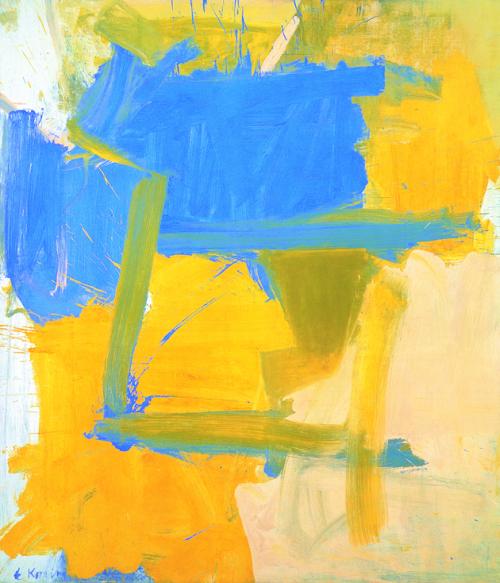de Kooning
dal 16/9/2005 al 22/1/2006
Segnalato da
16/9/2005
de Kooning
Kunstmuseum Basel, Basel
Paintings 1960 – 1980. Willem De Kooning is considered to be one of the leading exponents of American Abstract Expressionism. The paintings of that time bear the stamp of his elemental response to the landscape, and it is there that the figuration acquired a gestural vibrancy and a new richness of hue. Through a concise selection of large-format paintings, this brilliant and ground-breaking period in artist's work is placed firmly in the spotlight

Paintings 1960 – 1980.
Curator: Bernhard Mendes Bürgi
The exhibition at the Kunstmuseum Basel focuses on paintings created by Willem de Kooning between 1960 and 1980. De Kooning is considered to be one of the leading exponents of American Abstract Expressionism and is celebrated in the US as a key figure in twentieth-century painting. In Europe, however, the significance of the artist, who was born in Rotterdam in 1904 and died in New York in 1997, has yet to be fully appreciated. This is particularly true of his work of the sixties and seventies, when he increasingly began to distance himself from the big city life of New York, and, from 1963 onward, lived and worked on Long Island all year round.
The paintings of that time bear the stamp of his elemental response to the landscape, and it is there that the figuration – which Willem de Kooning never quite abandoned, unlike other representatives of Abstract Expressionism – acquired a gestural vibrancy and a new richness of hue. Through a concise selection of large-format paintings, this brilliant and ground-breaking period in de Kooning’s work is placed firmly in the spotlight. De Kooning’s later 1980s paint-ings, which display other characteristics, and which formed the focus of an exhibition that ran
in the US and Europe in the mid-nineties, are not included.
Featuring key works on loan from American and European museums and private collections, this exhibition reveals how de Kooning’s intense experience of nature led to abstraction in his works – although they are, broadly speaking, landscapes – and how the characteristic brush-work was, so to speak, unleashed. Thus, the reality of these pictures lies in the revelation of the act of painting. While the paintings of the early sixties with their pastel colors appear calm and luminous, the paintings created between 1975 and 1980 reveal an explosive exuberance liquifying into an openness of unbounded form.
Surprisingly, de Kooning’s permanent move to East Hampton, Long Island, coincided with the reemergence of his original theme, the idol-like “Women†paintings. Yet in comparison with those of the fifties, these images of women appear more sensual, less demonic, and at times merge with the landscapes in a process of complete assimilation.
Although the Kunstmuseum Basel has been considered a center for American art – particularly of Abstract Expressionism – since 1945, de Kooning’s work was not necessarily a main focus. This exhibition sets out to change this by showing among other things that his painting not only strongly influenced a younger generation of painters, but also that even today it has not lost any of its breathtakingly unrestrained quality or dynamic freshness.
Image: de Kooning, Untitled, 1961, Daros Collection
Catalogue
de Kooning. paintings 1960–1980
Bilingual edition German-English, Hatje Cantz
Essays: Bernhard Mendes Bürgi, Klaus Kertess, Ralph Ubl,
204 pages, numerous illustrations in full color and black and white, CHF 54.– / ca. EUR 35.–
Guided tours in German
On Wednesdays at 6 p.m. and on Sundays at 12 a.m. or by appointment
Events
For details: http://www.kunstmuseumbasel.ch
The exhibition is supported by
Stiftung Patronatskomitee Basler Kunstmuseen
Press office Kunstmuseum Basel
Christian Selz Phone +41 061 2066206 Fax +41 061 2066252
Kunstmuseum
St. Alban-Graben 16 CH-4010 Basel
Opening Hours
Tue - Sun 10 a.m. - 5 p.m. closed on Monday
Public Holidays (closed):
February 14, 15, 16 (Carnival),
March 25 (Good Friday),
December 24 and 25



